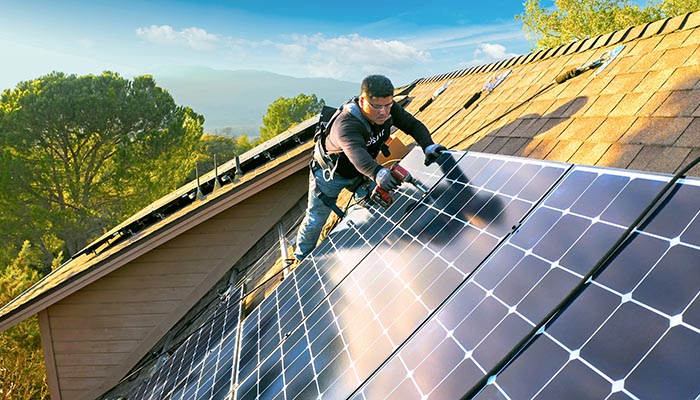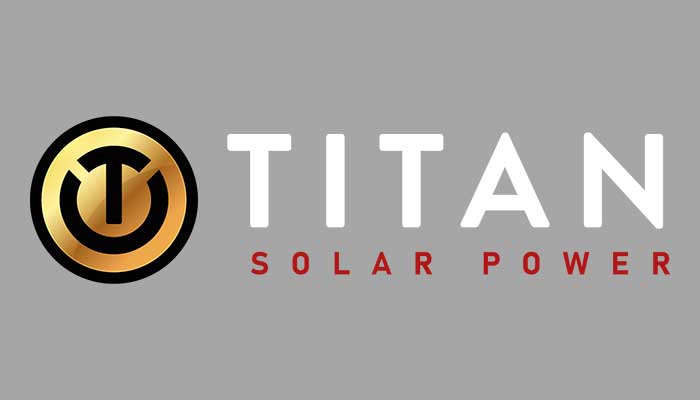
Updated November 26, 2021
If you are a homeowner, solar is a great option for you to hedge against rising electricity costs, blackouts and achieve energy freedom. In many states, you can also earn money by selling excess energy to utility companies.
In this article, we discuss how to assess how much solar your roof can generate and what factors you should consider when considering shifting to clean energy.
Table of Contents
Energy potential of your rooftop
There are many factors that determine the amount of energy that can be generated from your roof. Let’s start with a straightforward example. You are a homeowner in Phoenix, Arizona with 500 sq. ft. of usable roof space.
- Arizona is one of the sunniest states in the US with daily average 6.5 hours of sunlight hours.
- Usable Roof space – 500 sq. ft
- Average panel area – 17.55 sq. ft (5.4 feet by 3.25 feet)
- Total panels in the solar photovoltaic (PV) system – 28
- Roof area covered by Solar PV system – 28 * 17.55 = 500 sq. ft.
- Capacity of each panel – 300 Watt (W)
- Total capacity = 300 * 28 = 8400 W = 8.40 kilo Watt (kW)
Using these numbers, we can calculate the energy that your rooftop solar PV system will produce:
Annual energy produced (kWh) = daily sunlight hours * system capacity * days in a year = 6.5 * 8.4 * 365 =~ 20000 kWh
In the US, a household on average uses 10715 kWh energy annually. The extra energy that you generate can be sold to the grid and thus the solar system can also generate revenues for your household.
Check out the table below to see the energy potential of various rooftop sizes
| Roof top area (sq. ft.) | Number of panels that can be used | Energy Potential (kWh) |
| 300 | 17 | 9308 |
| 400 | 23 | 12593 |
| 500 | 28 | 15330 |
| 600 | 34 | 18615 |
| 700 | 40 | 21900 |
| 800 | 46 | 25185 |
| 900 | 51 | 27923 |
| 1000 | 57 | 31208 |
| 1100 | 63 | 34493 |
| 1200 | 68 | 37230 |
| 1300 | 74 | 40515 |
| 1400 | 80 | 43800 |
| 1500 | 85 | 46538 |
Now, these numbers include a lot of assumptions and the final outputs would vary. It is a factor of many variables – some of these are not under your control but the others can be optimized to extract the maximum energy from your roof. Let’s delve into some of these factors
Rooftop solar
Rooftop solar refers to the practice of installing solar panels on the top of your roofs to capture solar energy and convert it into electricity. Such systems are known as rooftop photovoltaic (PV) systems and can be installed on top of residential houses, commercial buildings like malls, grocery stores, offices, hospitals, etc.
Essentially, any roof can be converted into a clean energy generation station. Even better is the fact that once installed, solar panels and the entire photovoltaic system need very little maintenance and typically work for 20-25 years.
Factors affecting solar energy potential
The amount of energy that can be produced from a solar rooftop PV system varies from place to place and is a factor based on many variables.
Location and Climate of your place of residence
The location of your city and town plays an important role in the amount of energy solar panels will produce. Sunny states with maximum hours of sunlight like New Mexico, Nevada, and Arizona are greatly suited for solar energy installations while New York, Illinois, and Washington have the least number of Average Sunlight Hours. Look at the map below to see your state potential
Shading around your house
At the same time across different locations – the shade near your roof due to surrounding trees and other higher buildings also decreases the energy that would be produced. They block access to sunlight and reduce the efficiency of the PV panels. Seek out a solar installer to do shade analysis to assess the actual impact of shading on your PV efficiency.
Other factors that affect the solar potential include cloud cover (clouds absorb and reflect solar rays reducing energy potential), pollution, and elevation of the place. The correct orientation of the tilt of solar panels is also a critical factor as that helps in capturing the maximum number of solar rays.
Selecting your solar PV system
While you can do little about the location of your house, the city you are living in, and the neighboring buildings, there are other factors that can be optimized to maximize energy production to take care of your energy needs. You need to look at the following factors while purchasing a solar PV system.
Solar panel categories – Solar panel refers to an assembly of multiple individual solar cells. Solar panels come in four main categories:
- Monocrystalline solar panels
- Polycrystalline solar panel
- Passivated Emitter and Rear Cell (PERC) panels
- Thin Film solar panels.
Efficiency of different panels – In terms of efficiency (i.e., the % of solar energy that gets converted into electricity), PERC have the highest efficiency . Monocrystalline panels have around 20% efficiency and PERC go up to five percent higher than those. Polycrystalline panels hover around 15-17% efficiency and thin film panels even lower.
Capacity of panels – PV solar panels are also available in different wattages (capacity) which is also a factor of the panel category. Monocrystalline panels have the highest capacity. Many monocrystalline panels come with above 300 W capacity.
Cost of panels – Prices of different panels vary. Monocrystalline are the costliest per watt ($1-$1.5 per watt), followed by polycrystalline ($0.7- $1 per watt) and PERC panels ($0.32 – $0.65 per watt). If you have a small roof area, it makes sense to go for PERC panel to maximize production whereas larger properties can make use of other types of panels.
Efficiency and wattage capacity in combination with orientation of the panels determines the total amount of energy that can be produced from your roof per square meter. Given that roof area is fixed, a home owner can select a certain type of panel to suit their requirements and price range.
Use online resources to size your solar PV system and customize for your property.
The National Renewable Energy Laboratory (NREL), a national lab of the US Department of Energy has developed many resources which will help you identify the solar irradiation potential in your city, house address, and state across the year.
There are many calculators available online which will help you determine the energy that can be produced from your rooftop. The most authentic and comprehensive one is the PVWatts Calculator developed by NREL. You can use this awesome tool to check average energy potential in your city based on the precalculated formulas.
It lets you customize the:
- System size (kW)
- Module and panel types
- Tilt and Azimuth
- System losses
You can also see the value of the energy produced in dollars in this calculator. You can use these system capacities to also calculate the number of panels required and maximize your roof space energy potential by selecting suitable types of panels.
Alternatively, you can also enter your exact house location to get very specific values about the type of panels to be used and energy produced based on your rooftop using google maps.
If your utility company has Net Metering system in place, you can earn money by selling the excess energy to the grid. Use the Database of State Incentives for Renewables & Efficiency (DSIRE) database to check the net metering policy in your state along with all the incentives that you make take advantage of by installing solar on your rooftop.



